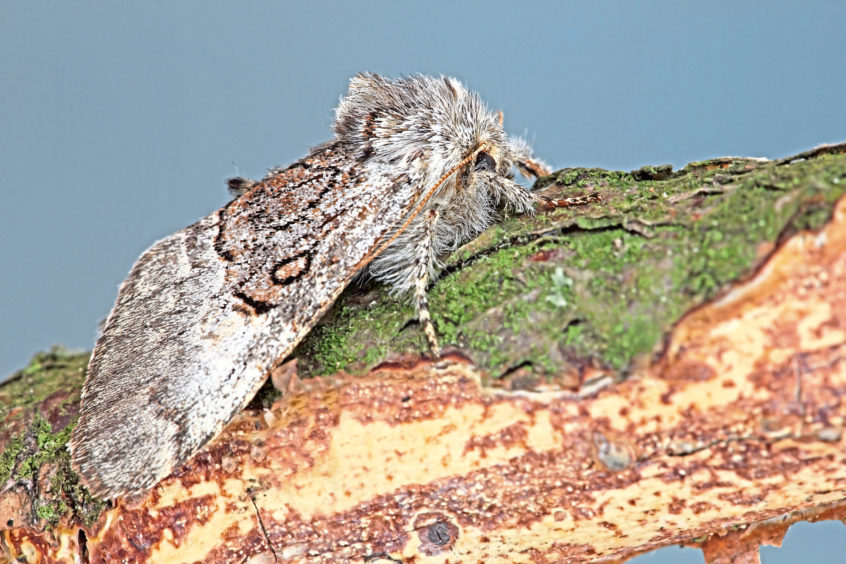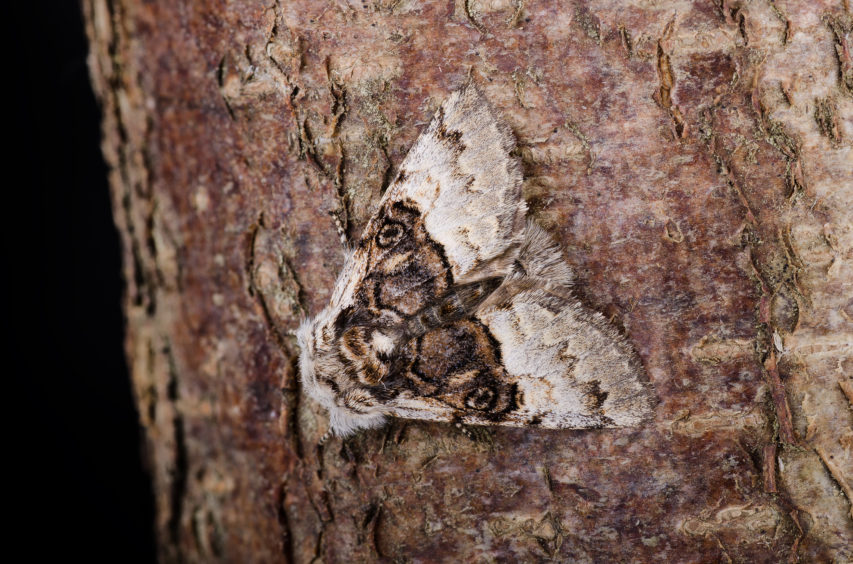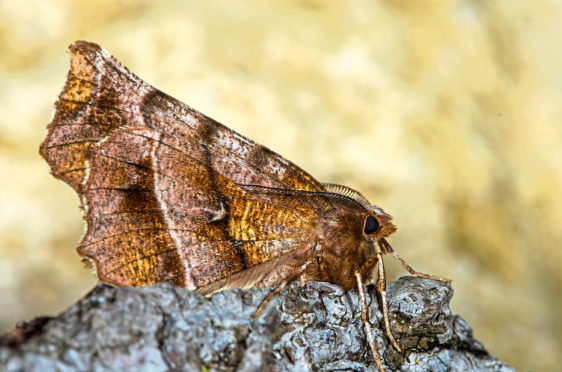Moths occur in a wide variety of habitats, occurring from the shoreline right up to our mountain tops. They vastly outnumber butterflies in terms of the number of species found in Scotland.
With eager anticipation, I padded across the lawn to the far corner of the garden where I hoped a treasure trove of natural wonders lay.
I had set my moth trap there the previous evening, and with dawn having now broken, I was keen to find out what this Aladdin’s Cave contained. Moth trapping is like hauling in a fishing net as you are never sure what one will find: sometimes the trap is almost empty, at other times full and bountiful. But whatever the case, that first glimpse inside is always exciting.

The live moth trap is simple in construction, a wire-framed muslin collecting chamber with an attractant light bulb. It works in a similar fashion to a lobster creel; the moths enter through a funnel at the top and once inside they cannot escape.
I peered inside and there was a reasonable haul of about a dozen moths. One immediately caught my eye – an early thorn moth. It is a distinctive species, quite large with the wings held upright when closed, just like a butterfly. I carefully removed the moth from the trap, and it perched on my finger, enabling me to examine it closely.
The scalloped wing edges, combined with brown mottled patterning gives this species the appearance of a crinkled leaf, and when resting during the day, early thorn moths are nigh-on impossible to spot. This exquisite creature rested on my finger for a while longer, before suddenly taking to the air on flickering wings.
There were also several nut-tree tussock moths inside the trap. What a wonderful name and they are real cuties, having a furred appearance and intricately patterned greyish wings. Indeed, the names of many of our moths are as colourful as the creatures themselves – sallow kitten, peach blossom, burnished brass, and brindled beauty to select but a few.

Moths come in a huge variety of shapes, sizes and colours, and represent one of the most diverse animal groups on the planet. Their importance to the wellbeing of our planet is crucial with both caterpillars and adults being important sources of food for many creatures. Bats in particular are reliant upon moths, and songbirds such as great and blue tits eagerly snap-up their caterpillars. Moths are also important pollinators.
I placed this nut-tree tussock on the top of a garden wall and watched in fascination when its wings began to quiver rapidly as it warmed its muscles in preparation for flight. Then up it flew, disappearing into nearby woodland where it would rest in the tree canopy until nightfall.
As it fluttered away, I reflected upon the mighty ecological punch this diminutive creature carried; a fundamental pillar of nature, helping to support so much other life in our complex and fragile environment. I also wondered what other species might turn up in my trap the following morning, and with that happy thought, I headed indoors.










